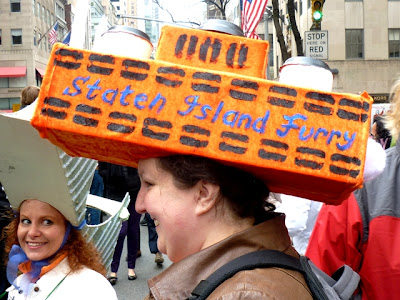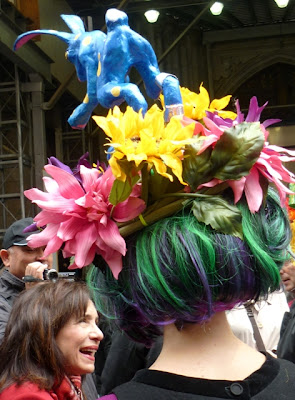Blog researched and written by HUVC's equally iconic intern Ceci Cholst
 |
| The Letty Lynton dress by Adrian. Image:The Legendary Joan Crawford |
Legendary costume designer Edith Head once said that Joan
Crawford’s giant white dress from the 1932 movie Letty Lynton was “the single most important influence on fashion in
film history.” This dress forever changed both the 1930s silhouette and the
fashion industry.
I personally think it looks odd and
unbalanced—gigantic puffed sleeves and a small ruffled collar paired with a tight
waistline and ruffled peplum—but there is no doubt it inspired hundreds, if not
thousands, of beautiful gowns and day dresses, some of which are available
for rental at Helen Uffner Vintage Clothing.
People often subconsciously
link 1930s fashion to Hollywood.
It’s no coincidence! Cultural and economic forces actively ensured that fashion
and film were inextricable. At the time, young white women made up both the
largest consumer market as well as the majority of the movie-going audience. To
them, Hollywood,
with its tales of rags to riches, represented a vision of accessible wealth.
From a 1934 Sears Catalogue, the
green dress on the left is described as "gleaming, twinkling star of
fashion.”
The description of the dress on the right from the 1933 Sears Catalogue reads: Its “new” “tiered puff sleeve” is the “alluring kind of dress that
flashes across the screen on your favorite movie star!”
 Around the same time, articles in popular media
urged women to “scientifically” assess their personalities based on popular
stars’ “types”, and dress accordingly. According to Sarah Berry’s book Screen Style, a popular 1936 self-help
guide indicated that Ginger Rogers was the “athletic type,” Katherine Hepburn
the “boyish type,” Kay Francis the “sophisticated type,” Janet Gaynor the
“ingénue,” and Marlene Dietrich and Norma Shearer the “romantic type.” By
“scientifically” matching your look to a star’s persona, you could dress according
to your correct personality!
Around the same time, articles in popular media
urged women to “scientifically” assess their personalities based on popular
stars’ “types”, and dress accordingly. According to Sarah Berry’s book Screen Style, a popular 1936 self-help
guide indicated that Ginger Rogers was the “athletic type,” Katherine Hepburn
the “boyish type,” Kay Francis the “sophisticated type,” Janet Gaynor the
“ingénue,” and Marlene Dietrich and Norma Shearer the “romantic type.” By
“scientifically” matching your look to a star’s persona, you could dress according
to your correct personality!
It didn’t take long for
big business to capitalize. In 1930, Bernard Waldman had organized the Modern
Merchandising Bureau, Inc., which licensed designs from upcoming films and sold
them in Cinema Styles boutiques in department stores all over the country. Shoes,
hats, purses, and clothes—anything that could be advertised in a fan magazine (the
equivalent of our celebrity gossip magazines)—suddenly became top sellers.
Women were not just exercising their economic power; they were making
themselves into movie stars and buying the wardrobe to match!
 |
| One of HUVC's 1930's gowns w. full bolero sleeves |
The Letty Lynton dress was this system’s biggest success.
In the film, Letty Lynton (Joan Crawford), is a
down-and-out socialite, fleeing by boat from an affair-gone-bad in South America. On the steamship back to the United States,
she meets a respectable, wealthy American man and they get engaged. Her former
lover is waiting for her in New York, waiting
to take her back to Uruguay,
and in order to escape his clutches and instead marry the wealthy American for
respectability and love, she accidentally murders the ex-lover and gets away
with it.
“Dishonored Lady”.
Letty wears the famous
white dress aboard the cruise ship returning to New York. Ironically, Letty looks extremely
innocent and girlish—the huge white sleeves resemble angel wings—but the
silhouette is strong, commanding, and powerful.
The dress caused such a
furor that, when asked why so many people either loved the dress or loved to
hate it, the costume designer, Adrian, replied, “In the studio we thought it a
trifle extreme.” The dress itself, with its many disparate elements, was a
madcap pastiche of neo-Victorian elements, a trend that was gaining popularity
as women sought to “re-feminize” after the flapper 20s. It also tapped into the
beginning of fashion designer Schiaparelli’s large-shouldered look.
 |
| Letty Lynton nightgown featured in the 1933 Spiegel Christmas Catalogue. (Image from Jezebel) |
 |
| The Letty Lynton Effect pictured in British Vogue (Images from the blog Theatre of Fashion) |
Today, though we can’t seem
go a day without a celebrity designing a new fashion line, film and now
TV-inspired fashion trends still inspire: Annie
Hall inspired women to wear menswear; Out
of Africa inspired safari looks; Mad
Men not only inspired a 60s retro fashion revival, the show also spawned a
licensed line with Banana Republic and allowed the show’s costume designer Janie
Bryant to create a line for QVC.
 |
| full sleeved-1930's chiffon dress from the HUVC Collection |
Most recently, Downton Abbey inspired Ralph Lauren’s Edwardian Fall 2012
Collection (in which Helen Uffner Vintage Clothing happened to be instrumental
in contributing inspiration for them to copy!) Finally, The Great Gatsby inspired not only successful licensed lines with Brooks
Brothers’ “Gatsby Collection”, but Tiffany's "Great Gatsby Collection" as well Gatsby-inspired eyeglasses from Warby
Parker!
80 years later, Hollywood and fashion are
still bosom buddies. Thanks, Letty Lynton!















































































































